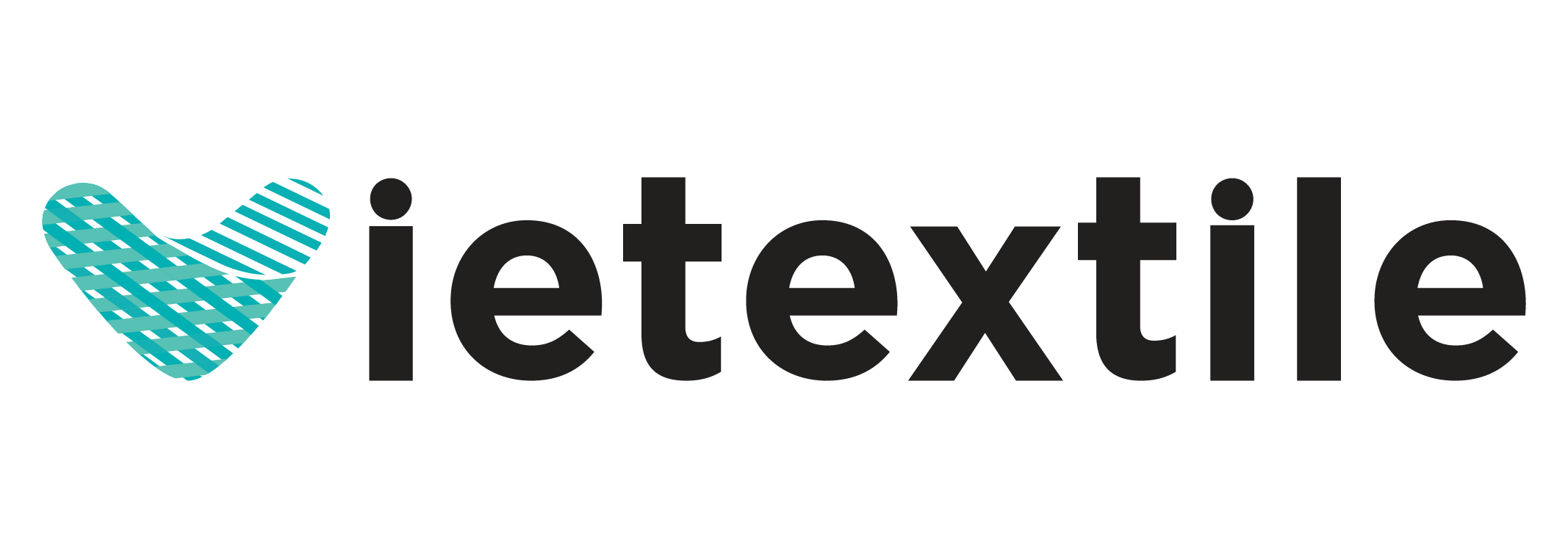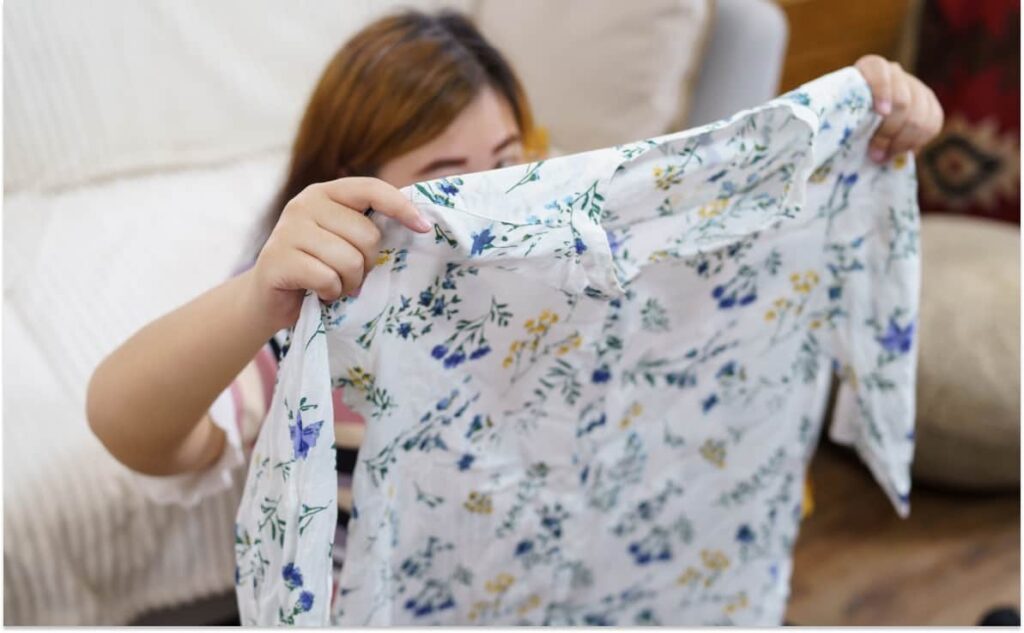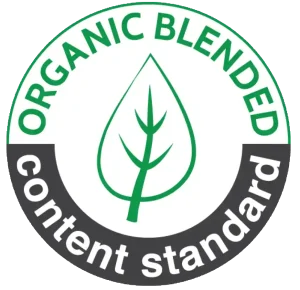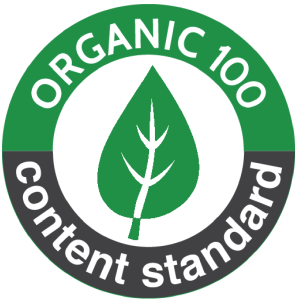Vietnam stands as one of the world’s largest textile and garment exporters, holding a dominant position in the global supply chain. The rapid adoption of digital printing technologies, known as Direct to Fabric (DTF), has been crucial for adapting to the fast-fashion cycle, increasing design complexity, and meeting stringent quality standards set by international buyers.
The success of any DTF operation, particularly for businesses focusing on direct to fabric in Vietnam, hinges fundamentally on selecting the correct ink chemistry. This choice is determined by the specific fiber composition (cotton, polyester, silk, blends), the required final product performance (wash fastness, rub fastness, UV resistance), and the environmental compliance standards necessary for the export market.
The market for direct to fabric in Vietnam is segmented by fiber type, leading to the co-existence and specialized application of three primary ink systems: Reactive, Disperse, and Pigment. Each ink type utilizes a distinct chemical mechanism to achieve fixation, requiring unique pre-treatment, post-treatment, and infrastructure.
Understanding the nuanced advantages and limitations of each system is vital for Vietnamese textile manufacturers seeking to optimize production costs, minimize environmental impact, and deliver globally competitive products.
This extensive technical analysis will dissect the chemistry, application methodologies, market prevalence, and sustainability considerations for the most popular inks used for direct to fabric in Vietnam. We will provide professionals with the in-depth knowledge necessary to navigate this complex technological landscape and make informed investment decisions tailored to specific market demands.

1. Reactive Inks: The Gold Standard for Natural Fibers
Nội dung tóm tắt
ToggleReactive inks are the undisputed champion for printing on cellulose fibers, primarily cotton and rayon, which remain essential materials for high-quality domestic and international apparel markets that rely on direct to fabric in Vietnam. The robustness of the covalent bond is unmatched for color retention.
1.1. The Chemistry of Covalent Bonding and Alkali Control
Reactive inks are so named because they contain dyestuffs that chemically react with the fiber molecule. This reaction is heavily dependent on precise control of the pre-treatment chemistry.
- The Target: Cellulose in cotton is rich in hydroxyl (-OH}) groups.
- The Pre-treatment Cocktail: The pre-treatment solution must contain:
- Alkali Donor (e.g., Sodium Bicarbonate or specialized carbonate blends): This is the chemical catalyst. During the high-temperature steaming process, the alkali generates hydroxide ions (OH}-), which de-protonate the -OH} group on the cellulose, creating a highly reactive celluloxide anion (Cell-O}-). The concentration of the alkali is paramount. Too little, and the reaction is incomplete (low color yield); too much, and the cellulose can suffer damage.
- Humectants (e.g., Urea, Glycols): These are hygroscopic agents essential for dye mobility. They prevent the tiny ink droplets from drying too quickly on the fiber surface and, more importantly, dissolve the reactive dye molecules and alkali during steaming, enabling them to migrate and find the reaction site. Urea is highly effective but has regulatory scrutiny due to its conversion to ammonia.
- Thickener/Rheology Modifier (e.g., High-purity Alginate): This controls the dot gain. Alginates hold the low-viscosity ink droplet precisely where it lands, preventing lateral migration (wicking) before fixation. The viscosity profile must be tailored to the fabric weave (e.g., finer weaves need lower viscosity pre-treatment).
- The Bond: During the fixation process (steaming), the activated dye molecule forms a permanent, irreversible covalent bond with the Cell-O}- site. This strong bond ensures the dye becomes a literal part of the fiber structure.
1.2. Fixation Dynamics and Hydrolysis
The chemical reaction must be controlled to maximize the covalent bond formation and minimize the wasteful side reaction known as hydrolysis.
- Steaming Requirements: Fixation requires saturated steam at atmospheric pressure (100–102°C) for approximately 7–12 minutes. Saturated steam is critical because it introduces the necessary moisture for the dye and alkali to solubilize and become mobile.
- Hydrolysis: In the presence of water, the reactive dye can also react with a hydroxyl ion from the water (OH}-), forming a hydrolyzed (unfixed) dye. This hydrolyzed dye does not bond to the fiber and must be completely removed in the post-treatment wash. Inefficient washing of hydrolyzed dye is the primary cause of poor wet fastness and staining in subsequent laundry cycles.
- Application in the Vietnamese Market: The demand for Reactive DTF is driven by high-end apparel and fashion items produced for export to Europe and North America, where cotton is favored for its comfort and the highest fastness standards are enforced.
1.3. Infrastructure and Environmental Demands
- High CAPEX: The process mandates significant capital investment in two key post-treatment machines:
- Steamer: For applying saturated steam to drive the chemical fixation reaction.
- Washing Range: For the rigorous hot soaping and rinsing necessary to remove unfixed dye, thickener, and residual chemicals.
- Effluent Challenge: The high water usage and resulting effluent load—containing hydrolyzed dye, alkali residue, and sometimes high levels of urea/nitrogen—mean manufacturers utilizing direct to fabric in Vietnam with Reactive inks must have sophisticated Effluent Treatment Plants (ETP), including biological treatment stages, to comply with strict discharge limits.
2. Disperse Inks: Powering the Synthetic Export Sector
Vietnam’s massive production capacity for performance wear, sportswear, and technical apparel (all primarily polyester) makes Disperse inks the most prevalent system for manufacturers focused on this segment of direct to fabric in Vietnam.
2.1. The Mechanism of Sublimation and Thermal Transfer
Disperse inks are designed to fix to hydrophobic fibers, exclusively polyester and poly blends with high polyester content, through a physical, thermodynamic process.
- The Process: Disperse dyestuffs are non-ionic and insoluble in water. During fixation, the ink is exposed to high, dry heat (\mathbf{180–210{\circ}C}).
- Thermodynamics of Fixation:
- Fiber Glass Transition: The polyester fiber structure reaches its glass transition temperature (Tg}), causing the polymer chains to relax and open up the amorphous regions.
- Dye Sublimation: The heat causes the disperse dye molecule to sublime (turn directly from a solid state to a gaseous state).
- Physical Trapping: The gaseous dye molecules penetrate the opened polymer structure and dissolve into the polymer matrix. Upon rapid cooling, the polymer chains snap back, physically trapping the dye molecules within the fiber.
- Dye Selection (L-type vs. E-type): Professional practice in direct to fabric in Vietnam involves selecting disperse dyestuffs based on their molecular weight and sublimation properties (L-type for high-temperature/high-fastness, E-type for lower temperature/lighter colors).
2.2. Fixation Technology: Calendering vs. Curing
Vietnamese manufacturers employ different fixation technologies based on volume and required fabric performance.
- Sublimation Transfer Printing (Calendering): This involves printing on coated paper first. The paper is then pressed against the fabric at high heat (190–210°C) using a rotary calender. This method is dominant for apparel and provides excellent sharp detail.
- Direct Disperse Printing (Curing/Baking): The ink is printed directly onto pre-treated polyester fabric (pre-treatment aids adhesion and color yield). The fixation is achieved by passing the fabric through a long, high-temperature oven (curing/baking). This is preferred for flag fabrics, mesh, and outdoor signage.
- Post-Treatment Necessity: While often called a “waterless” process, printing dark or deep colors often requires a mild clearing wash or reduction clearing (using sodium hydrosulfite in a basic medium) to remove superficial, unfixed dye, preventing back-staining (color loss onto white areas or other textiles) and boosting rub fastness.
2.3. Market Advantages and Water Footprint
- Speed and Efficiency: The thermal fixation process is rapid, leading to high throughput.
- Durability: The print is highly resistant to UV light and chemical degradation, maintaining the technical integrity of the polyester fiber.
- “Dry” Process: The minimal post-washing requirement (or simple clearing) significantly reduces water consumption and ETP strain—a major sustainability benefit for direct to fabric in Vietnam, making it highly competitive for environmentally conscious brands.
3. Pigment Inks: The Universal, Low-CAPEX Solution

Pigment inks represent the fastest-growing segment for businesses offering diversified direct to fabric in Vietnam, primarily due to their versatility and low barrier to entry.
3.1. The Mechanism of Mechanical Adhesion and Binder Chemistry
Pigment inks are unique because they rely on a mechanical bond via a specialized polymeric binder. The quality and chemistry of this binder dictate the final fastness properties.
- The Components: Pigment inks consist of microscopic, insoluble color particles suspended in an aqueous solution.
- The Binder (The Key Chemical): The binder is typically an acrylic or polyurethane dispersion. It is applied either as a pre-treatment coating on the fabric before printing, or it is integrated directly into the ink (known as “One-Step” Pigments).
- Fixation (Cross-Linking): The process requires dry heat curing (150–170°C). This heat activates the chemical cross-linking of the polymer binder. The binder solidifies, forming a durable, transparent, permanent film that encapsulates the pigment particle and physically glues it to the fiber surface.
- Self-Crosslinking vs. External Catalyst: Modern binders are often self-crosslinking (e.g., using N-methylol compounds, though their use is highly regulated due to Formaldehyde release). Higher performance systems sometimes use a two-part system requiring a catalyst in the pre-treatment to ensure maximum adhesion.
3.2. Practical Challenges in Production
While highly versatile for direct to fabric in Vietnam, pigment systems present unique operational challenges.
- Hand-Feel Compromise: Since the polymer film sits on the surface, prints can sometimes feel stiff or have a heavier ‘hand,’ especially in areas of high ink coverage, compared to the softness of reactive-dyed cotton. Achieving the right balance between wash fastness (requiring more binder) and soft hand-feel (requiring less binder) is a constant optimization challenge.
- Jetting Stability and Maintenance: Pigment particles, being solids, are larger and heavier than soluble dye molecules. This makes the ink more prone to sedimentation, which can lead to printhead nozzle clogging (jet-outs) if the ink is not constantly recirculated and filtered. Regular and specialized printhead maintenance is non-negotiable.
- Post-Treatment Simplicity: They require simple dry heat curing, eliminating the need for expensive steamers and vast washing ranges. This low water usage profile makes them highly attractive for manufacturers seeking a greener direct to fabric in Vietnam operation.
4. Acid Inks: The Niche for Premium Protein and Polyamide Fibers
Acid inks occupy a smaller, specialized segment of the direct to fabric in Vietnam market, primarily catering to high-value textiles like natural silk and synthetic nylon, demanding exceptional color brilliance and wet fastness.
4.1. The Chemistry of Ionic Bonding and Fiber Preparation
Acid inks rely on an ionic bond, dictated by precise pH control and fiber preparation.
- Pre-treatment Environment: The process requires a pre-treatment that creates a highly acidic environment (\mathbf{pH 3.5–5.0}). This acid protonates the amine (-NH}_2) groups on the silk/nylon fiber, making them positively charged (-NH}_3+).
- The Ionic Bond: Acid dye molecules are negatively charged (anionic, typically containing sulfonate groups R}-SO}_3-). They form an ionic bond (electrostatic attraction) with the positively charged sites on the fiber. This bond is weaker than a covalent bond but is the strongest feasible bond for protein fibers.
- Fixation and Silk Tendering: Fixation is achieved through saturated steam (similar to Reactive inks). The critical challenge is the balance: sufficient steam time (5–8 minutes) is needed for full dye migration and bonding, but excessive steam causes silk tendering (hydrolysis of the peptide bonds), leading to strength loss and yellowing. Precise control over time, temperature, and steam quality is paramount.
4.2. Specialized Application and Quality Control in Vietnam
The use of Acid inks in direct to fabric in Vietnam is concentrated in heritage and high-fashion segments.
- Silk: Used extensively for printing luxurious Vietnamese silk (e.g., Hà Đông silk) destined for high-end boutique markets, where color clarity and preservation of the silk’s natural sheen and soft hand-feel are paramount.
- Nylon: Used for printing specialized synthetics like nylon-based swimwear or technical apparel that demand high-performance color retention and resistance to chlorine (for swimwear).
- Post-Washing: Requires a gentle but comprehensive washing process to remove residual thickeners (often Guar-based or Alginate) and acid donors. Due to the delicacy of silk, mechanical agitation must be minimized during washing.
5. Digital Color Management and Consistency
Achieving consistent color output across different ink chemistries and print machines is a major technical challenge for manufacturers specializing in direct to fabric in Vietnam. This requires meticulous color management.
5.1. The Role of ICC Profiles
The International Color Consortium (ICC) profile is the mathematical description of a specific printing system’s color behavior.
- Profile Generation: Creating an accurate ICC profile involves printing hundreds or thousands of measured color patches onto the pre-treated fabric using the specific ink set, resolution, and media settings. A spectrophotometer is then used to read the Lab* values of these patches. Software uses this data to map the printer’s color gamut.
- Gamut Size:
- Reactive and Acid Inks typically offer the largest color gamut (the range of achievable colors) due to the purity and brilliance of the soluble dyestuffs.
- Pigment Inks generally have a smaller gamut, particularly in saturated blues, reds, and blacks, because the opaque nature of the solid particles limits light refraction.
- Calibration for Direct to Fabric in Vietnam: Due to ambient humidity fluctuations in Vietnam, which affect ink drying and dot gain, profiles must be regularly checked and potentially regenerated, especially for critical color-matching jobs.
5.2. Delta E (Color Difference) Standards
Global buyers for direct to fabric in Vietnam often mandate strict color difference standards (Delta E, E}).
- Tolerance: For premium apparel, E} must be less than 1.0 (virtually imperceptible to the human eye). For commodity textiles, E} up to 3.0 may be acceptable.
- Process Control: Achieving low E} requires not just a perfect ICC profile but tight control over the entire process chain: pre-treatment consistency, steam quality (for Reactive/Acid), and curing temperature uniformity (for Disperse/Pigment).
6. Regulatory Compliance and ETP Design

Compliance with global chemical restrictions is a critical prerequisite for all export-focused direct to fabric in Vietnam operations. The choice of ink system directly impacts the regulatory burden.
6.1. ZDHC and MRSL Adherence
The Zero Discharge of Hazardous Chemicals (ZDHC) Foundation’s Manufacturing Restricted Substances List (MRSL) dictates which chemicals are forbidden or limited in the manufacturing process itself.
- Ink Formulation: Reputable ink suppliers for direct to fabric in Vietnam must ensure their Reactive, Disperse, and Pigment inks are formulated without prohibited substances like certain heavy metals, Azo dyes that can cleave to form carcinogenic amines, and specific phthalates.
- Pre-treatment Chemicals: The MRSL extends to pre-treatment auxiliaries. For instance, manufacturers must avoid formaldehyde-releasing cross-linking agents in Pigment binders and certain persistent wetting agents in the pre-treatment solutions.
6.2. OEKO-TEX Standard 100
This certification guarantees the final textile product is free from harmful substances and is required by most European retailers.
- Product Safety: While MRSL focuses on process inputs, OEKO-TEX focuses on the final product output. All dye and pigment particles, as well as residual chemicals left on the fabric after washing, must meet these human ecology standards.
6.3. The ETP Design Challenge for Direct to Fabric in Vietnam
The environmental compliance strategy is fundamentally different based on the ink system used.
- Reactive ETP Focus: The ETP for Reactive users must handle high Chemical Oxygen Demand (COD) from unfixed dye and thickeners, high salt content from neutralization, and high Total Nitrogen (TN) if urea is used. This requires multi-stage treatment including:
- Coagulation/Flocculation: To remove dye color and suspended solids.
- Biological Treatment (Aerobic/Anaerobic): To break down COD and TN (e.g., using activated sludge).
- Pigment/Disperse ETP Focus: Since these processes use significantly less water and minimal post-washing, the ETP deals primarily with waste from pre-treatment padding and printhead flushing. The primary focus shifts from large-scale biological treatment to handling high concentrations of polymer binder residue and pigment solids. This often involves more physical and chemical separation techniques.
7. Strategic Ink Selection and Operational Trade-offs
A successful strategy for DTF adoption in Vietnam requires matching ink chemistry to the primary business model, considering TCO (Total Cost of Ownership) and environmental impact.
7.1. Total Cost of Ownership (TCO) Comparison
The TCO analysis for direct to fabric in Vietnam must include all elements, not just the ink price per kilogram.
| Cost Component | Reactive Inks | Disperse Inks | Pigment Inks |
| Ink Cost (per Kg) | Medium | High | Low to Medium |
| Pre-treatment Cost (per meter) | High (Alkali, Urea, Alginate) | Low (Polymer assist) | Medium (Polymer Binder) |
| Fixation CAPEX | High (Steamer) | Medium (Curer/Calender) | Low (Curing Oven) |
| Post-Treatment OPEX | Very High (Water, Steam, Soaping Agents, ETP) | Low (Minimal/No Washing) | Low (Minimal/No Washing) |
| Overall TCO | Best for very high volume, premium cotton where fastness justifies cost. | Best for polyester volume. Water savings drive cost efficiency. | Best for short-runs, blends, and low-CAPEX entry. |
7.2. Addressing the “Blend” Market
The rising demand for blended fabrics (e.g., 65% Polyester / 35% Cotton) forces a complex choice for direct to fabric in Vietnam manufacturers:
- Dual Pass: Printing with Disperse ink, curing, then printing with Reactive ink, and steaming (High TCO, complex logistics).
- Pigment Single Pass: Printing with Pigment ink (Single pass solution). This is the overwhelming preference due to the market’s demand for low-cost, fast-turnaround solutions, despite the slight compromise on hand-feel and fastness compared to the dual process. The evolution of next-generation pigment binders is continually closing this performance gap.
8. Conclusion: Master the Chemicals for Direct to Fabric in Vietnam
The competitive strength of direct to fabric in Vietnam rests on its manufacturers’ ability to harness the power of digital ink chemistry strategically. The choice among Reactive, Disperse, Acid, and Pigment systems is a complex technical and financial decision dictated by fiber type, fastness requirements, and environmental compliance targets. Mastery of Reactive systems secures the premium cotton market, utilizing chemical fixation through steaming; Disperse systems dominate the technical polyester segment through rapid thermal sublimation; and Pigment systems provide the essential versatility and low water footprint demanded by the fast-moving blended fabric market.
As Vietnam continues its ascension in the global textile arena, continuous investment in advanced ink formulations, precise color management protocols (ICC profiling), and compliant chemical management systems (ZDHC/OEKO-TEX) will be non-negotiable prerequisites. By integrating chemical expertise with operational efficiency, Vietnamese manufacturers are not merely printing fabric; they are chemically engineering textiles to meet the world’s most exacting standards, solidifying their position as a global leader in the direct to fabric space.
Partner with VieTextile to access the latest ink technologies, auxiliaries, and technical expertise required to elevate your production standards for direct to fabric in Vietnam and secure your position in the global textile arena.
Contact VieTextile Today for Expert Consultation!
Hotline: 0901 809 309
Email: info@vietextile.com
Website: https://vietextile.com










